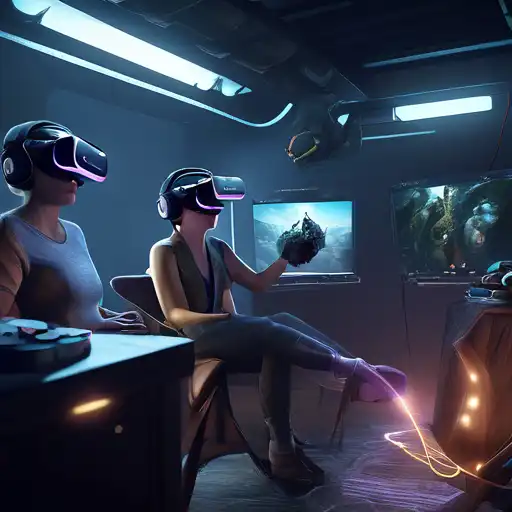Introduction to Virtual Reality
Virtual Reality (VR) has transformed the way we interact with digital content, offering immersive experiences that were once the stuff of science fiction. This guide will walk you through the essentials of creating captivating VR experiences that engage and astonish users.
Understanding VR Technology
Before diving into creation, it's crucial to understand the technology behind VR. VR headsets, motion tracking, and 3D audio are just the tip of the iceberg. Each component plays a vital role in crafting an immersive environment.
Designing for Immersion
Immersion is the key to successful VR experiences. This involves detailed environments, interactive elements, and a user interface that feels natural within the virtual world. Consider the user's perspective and how they will navigate your VR space.
Key Elements of Immersive Design
- High-quality 3D models and textures
- Realistic physics and interactions
- Engaging narrative or gameplay
- Comfortable user movement and controls
Development Tools and Platforms
Several tools and platforms can help bring your VR visions to life. Unity and Unreal Engine are among the most popular for VR development, offering extensive resources and community support.
Choosing the Right Tools
Selecting the right development tools depends on your project's scope, target platform, and team expertise. Research and experimentation are key to finding the perfect fit.
Testing and Optimization
VR experiences must be thoroughly tested to ensure they run smoothly across all target devices. Optimization is crucial to prevent motion sickness and ensure a comfortable experience for all users.
Optimization Techniques
- Reducing polygon counts without sacrificing quality
- Optimizing textures and assets
- Implementing efficient lighting solutions
Publishing and Distribution
Once your VR experience is polished and ready, choosing the right platform for distribution is essential. Platforms like Oculus Store, SteamVR, and Viveport offer access to vast audiences.
Conclusion
Creating immersive VR experiences is a complex but rewarding process. By understanding the technology, focusing on immersive design, and utilizing the right tools, you can craft experiences that captivate and engage. The future of VR is bright, and there's never been a better time to start creating.
For more insights into VR development, check out our VR Development Tips article.
